- Choosing the Right Actinidia Variety for Your Garden
- Climate
- Space
- Pollination
- Taste and Harvest Time
- Disease Resistance
- Availability
- Tips for Planting Actinidia in Your Garden
- 1. Choose the Right Location
- 2. Prepare the Soil
- 3. Planting Actinidia
- 4. Watering
- 5. Mulching
- 6. Training and Support
- 7. Fertilizing
- 8. Pruning
- 9. Pest and Disease Control
- 10. Harvesting
- Providing Proper Care for Actinidia Plants
- Planting
- Watering
- Fertilizing
- Pruning
- Pest and Disease Control
- Pruning Actinidia Plants for Optimal Growth
- When to Prune Actinidia Plants
- Tools for Pruning Actinidia Plants
- Pruning Actinidia Vines
- Pruning Actinidia Trees
- Protecting Actinidia Plants from Pests and Diseases
- Pest Control
- Disease Prevention
- Regular Inspections and Maintenance
- Harvesting and Storing Actinidia Fruits
- Harvesting Actinidia Fruits
- Storing Actinidia Fruits
- Popular Actinidia Varieties for Different Climates
- 1. Actinidia deliciosa (Hayward)
- 2. Actinidia chinensis (Golden Kiwifruit)
- 3. Actinidia arguta (Hardy Kiwi)
- 4. Actinidia kolomikta (Arctic Beauty Kiwi)
- Exploring Unique Actinidia Hybrids and Cultivars
- 1. Actinidia arguta ‘Issai’
- 2. Actinidia arguta ‘Geneva’
- 3. Actinidia chinensis ‘Hayward’
- 4. Actinidia kolomikta
- 5. Actinidia deliciosa ‘Jenny’
- 6. Actinidia polygama
- 7. Actinidia purpurea
- Summary
- Question-answer:
- What is Actinidia?
- What are the different types of Actinidia?
- What are some tips for growing Actinidia in the garden?
- Can Actinidia be grown in containers?
- How long does it take for Actinidia to bear fruit?
- Video: Raintree Nursery’s Kiwi Growing Guide
Actinidia, commonly known as kiwi, is a delicious and nutritious fruit that can be easily grown in your own garden. This article will provide you with some tips and tricks for successfully growing actinidia, as well as a handy guide to the different types and varieties available.
Actinidia plants are vigorous climbers that require a sturdy support structure, such as a trellis or pergola, to grow properly. They prefer a sunny location with well-drained soil, and can tolerate a wide range of climates. However, some varieties may be more suited to warmer or cooler regions, so it’s important to choose the right type for your specific area.
When planting actinidia, make sure to provide enough space for the plant to spread out, as it can grow up to 30 feet in length. Dig a hole that is twice as wide and deep as the plant’s root ball, and mix in some organic matter to improve the soil’s fertility. Water the plant regularly, especially during dry spells, and apply a balanced fertilizer once a month during the growing season.
There are several different types of actinidia, each with its own unique flavor and appearance. The most common type is Actinidia deliciosa, which produces the familiar fuzzy brown kiwi fruit. However, there are also other varieties, such as Actinidia arguta (hardy kiwi) and Actinidia kolomikta (variegated kiwi), that offer a different taste and visual appeal.
Hardy kiwi is smaller and sweeter than traditional kiwi, with smooth skin that doesn’t require peeling. Variegated kiwi, on the other hand, has striking pink and white leaves that can add a decorative touch to your garden. Whichever type you choose, actinidia will make a unique and tasty addition to your garden, and will provide you with a bountiful harvest of delicious fruit.
Choosing the Right Actinidia Variety for Your Garden
Actinidia, commonly known as kiwi fruit, is a versatile and delicious fruit that can be grown in home gardens. When choosing an actinidia variety for your garden, there are several factors to consider.
Climate
Actinidia is native to temperate regions, so it thrives in areas with mild winters and moderate summers. Consider the climate of your region and choose a variety that is suitable for your specific conditions.
Space
Actinidia plants are vigorous climbers and require ample space to grow. They can reach heights of 30 feet or more, so make sure you have enough vertical space in your garden. Additionally, actinidia plants need support, such as a trellis or pergola, to climb and spread out.
Pollination
Most actinidia varieties are dioecious, meaning they have separate male and female plants. In order for fruit to be produced, both male and female plants need to be present. Be sure to choose a variety that is compatible with the pollination requirements of other kiwi plants in your garden.
Taste and Harvest Time
Actinidia varieties can vary in taste, with some having a more sweet flavor and others being more tart. Consider your personal preferences when choosing a variety. Additionally, different varieties have different harvest times, so choose a combination of varieties that will provide a continuous harvest throughout the season.
Disease Resistance
Some actinidia varieties have better resistance to diseases and pests than others. Consider the prevailing diseases and pests in your area and choose a variety that is known for its resistance to those specific issues.
Availability
Finally, consider the availability of the actinidia variety you are interested in. Some varieties may be more readily available in your area, while others may be more difficult to find. Check with local nurseries or online suppliers to see what varieties are available in your region.
By considering these factors, you can choose the right actinidia variety for your garden and enjoy the delicious fruits of your labor.
Tips for Planting Actinidia in Your Garden
If you want to grow actinidia, also known as kiwifruit, in your garden, here are some helpful tips to ensure successful planting and growth:
1. Choose the Right Location
Actinidia plants thrive in full sun but can also tolerate partial shade. Select a location in your garden that receives at least 6 hours of direct sunlight each day. The soil should be well-draining and rich in organic matter. Avoid areas that are prone to waterlogging.
2. Prepare the Soil
Before planting, prepare the soil by removing any weeds, rocks, or debris. Dig a hole that is wide and deep enough to accommodate the plant’s roots. Mix in compost or well-rotted manure to improve soil fertility and drainage.
3. Planting Actinidia
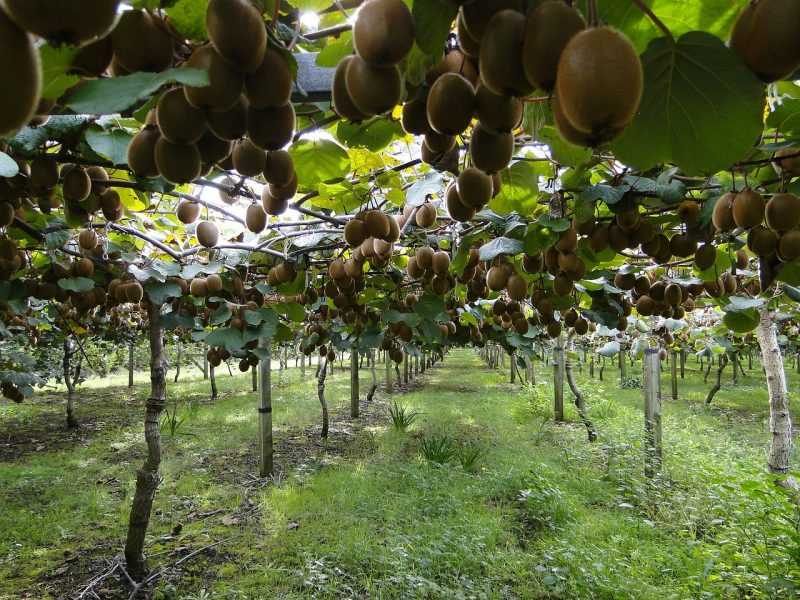
Plant actinidia in early spring, just as the soil begins to warm up. Place the plant in the prepared hole, ensuring that the root ball is level with or slightly above the soil surface. Backfill with soil, gently firming it around the roots.
4. Watering
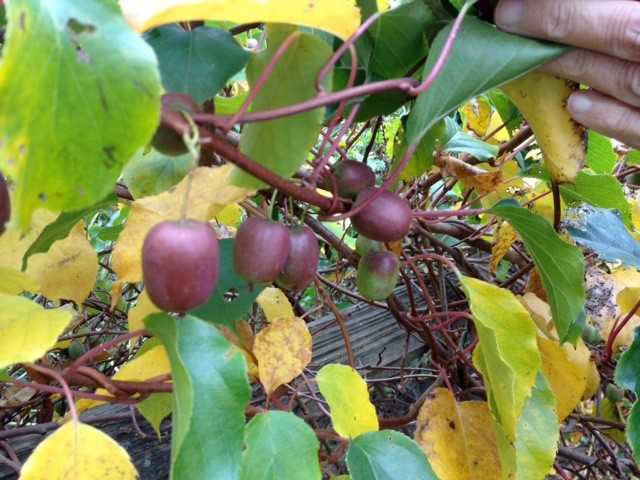
Keep the newly planted actinidia well-watered during the first few weeks. Water deeply, saturating the soil around the roots. Once established, actinidia plants require regular watering, especially during dry periods.
5. Mulching
Apply a layer of organic mulch around the base of the plant to help conserve moisture, suppress weeds, and regulate soil temperature.
6. Training and Support
Actinidia plants are vigorous climbers and require support to grow. Install a trellis, arbor, or other support structure for the vines to climb on. Train the vines to grow along the support, using soft ties or twine to secure them.
7. Fertilizing
Feed actinidia plants with a balanced, slow-release fertilizer in early spring and again in late summer. Follow the manufacturer’s instructions for application rates. Avoid over-fertilizing, as this can lead to excessive leaf growth at the expense of fruit production.
8. Pruning
Prune actinidia plants in late winter or early spring before new growth starts. Remove any dead, damaged, or diseased branches. Thin out overcrowded growth and train the vines to the support structure. Regular pruning helps maintain plant health and encourages fruit production.
9. Pest and Disease Control
Monitor your actinidia plants for common pests such as aphids, mites, and leafhoppers. Use organic or chemical pest control methods as necessary. Actinidia plants can also be susceptible to diseases such as canker and powdery mildew. Consult a local horticulture expert for advice on preventing and managing these issues.
10. Harvesting
Depending on the variety, actinidia fruit typically ripens in late summer or early autumn. Harvest the fruit when it is fully ripe but still firm. Kiwifruit can be stored in a cool, dry place or refrigerated for several weeks.
By following these planting tips, you can enjoy a bountiful harvest of delicious actinidia fruit in your garden. Happy gardening!
Providing Proper Care for Actinidia Plants
Actinidia plants, commonly known as kiwifruit vines, are native to East Asia and are popular for their delicious and nutritious fruits. To ensure that your Actinidia plants thrive in your garden, it’s important to provide them with proper care. Here are some tips:
Planting
- Choose a sunny location with well-drained soil for your Actinidia plants.
- Space the plants about 10-15 feet apart to allow for proper air circulation.
- Dig a hole twice as wide and deep as the root ball of the plant.
- Place the plant in the hole, making sure that the root collar is level with the soil surface.
- Backfill the hole with soil and water thoroughly.
Watering
- Water Actinidia plants regularly, especially during dry periods.
- Make sure the soil is moist, but not waterlogged.
- Avoid overwatering, as it can lead to root rot.
Fertilizing
- Apply a balanced, slow-release fertilizer in early spring.
- Follow the manufacturer’s instructions for dosage and application methods.
- Avoid over-fertilizing, as it can cause excessive vegetative growth at the expense of fruit production.
Pruning
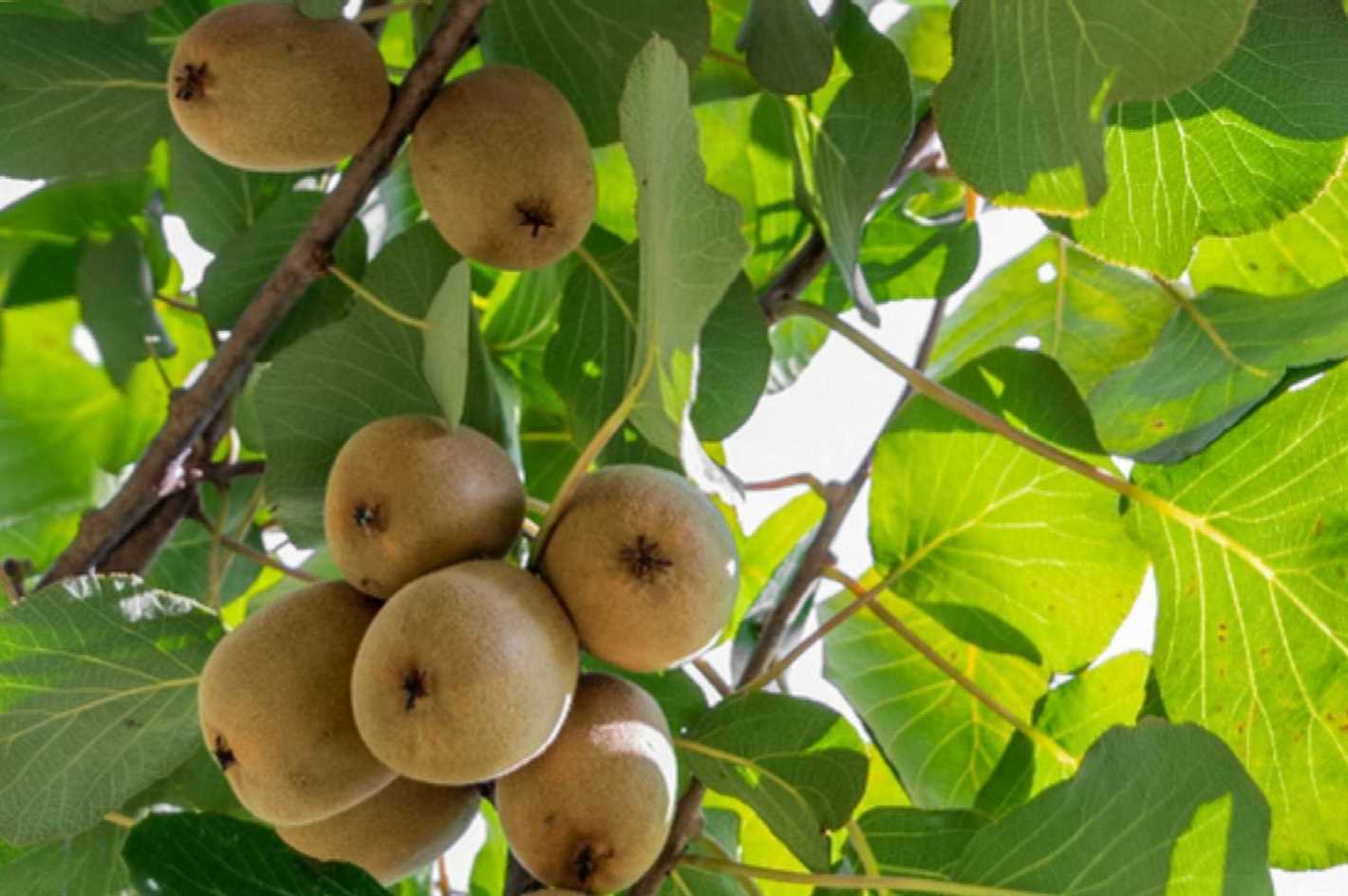
- Prune Actinidia plants in late winter or early spring while they are still dormant.
- Remove any dead or damaged wood.
- Thin out the branches to improve air circulation and allow more sunlight to reach the fruit.
- Train the vines along a trellis or support structure to keep them upright and facilitate harvesting.
Pest and Disease Control
- Inspect Actinidia plants regularly for signs of pests and diseases.
- Common pests include aphids, scale insects, and spider mites.
- Use organic insecticides or insecticidal soaps to control pests.
- For diseases like root rot and leaf spot, ensure proper watering and sanitation practices.
By following these care tips, you can enjoy a bountiful harvest of delicious kiwifruits from your Actinidia plants.
Pruning Actinidia Plants for Optimal Growth
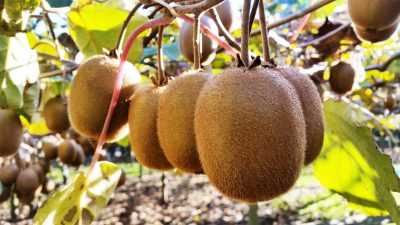
Pruning actinidia plants is an important step in their care and maintenance. By properly pruning your actinidia plants, you can help promote optimal growth, increase fruit production, and maintain the overall health and shape of the plant.
When to Prune Actinidia Plants
The best time to prune actinidia plants is during late winter or early spring while the plant is dormant. Pruning during this time allows the plant to recover quickly and encourages new growth in the upcoming season. Avoid pruning during the growing season as it may inhibit fruit production.
Tools for Pruning Actinidia Plants
Before starting the pruning process, make sure you have the right tools. Some commonly used tools for pruning actinidia plants include:
- Pruning shears
- Loppers
- Hand saw
Pruning Actinidia Vines
When pruning actinidia vines, there are a few key points to keep in mind:
- Remove Dead or Damaged Wood: Start by removing any dead or damaged wood. This will help maintain the overall health of the plant and prevent the spread of diseases.
- Thin Out Overcrowded Growth: Actinidia plants can become overgrown with time. To ensure optimal airflow and light penetration, thin out overcrowded growth by removing smaller, weaker branches.
- Train Vines: Actinidia vines can be trained to grow in a specific direction or shape. Use pruning to guide the vines and maintain the desired shape of the plant.
- Prune After Fruit Harvest: After the fruit harvest, prune the actinidia plants to remove any tangled or overcrowded branches. This will promote better fruit production in the following season.
Pruning Actinidia Trees
When pruning actinidia trees, follow these guidelines:
- Remove Suckers: Actinidia trees often produce suckers, which are small shoots that grow from the base of the tree. Remove these suckers to prevent them from competing for nutrients and space.
- Prune Crossing Branches: If there are any branches that are crossing or rubbing against each other, prune them to prevent damage and promote healthy growth.
- Prune for Desired Shape: Actinidia trees can be pruned to achieve a specific shape or form. Whether you prefer a bushy tree or a more open canopy, prune accordingly to maintain the desired shape.
Remember, proper pruning practices can greatly benefit your actinidia plants. However, it’s important to avoid over-pruning, as this can stress the plant and affect its growth and fruit production. When in doubt, consult a gardening expert or reference a reliable pruning guide to ensure you are pruning your actinidia plants correctly.
Protecting Actinidia Plants from Pests and Diseases
Actinidia plants, commonly known as kiwi vines, are susceptible to various pests and diseases. It is important to take preventive measures and address any issues promptly to ensure the health and productivity of the plants.
Pest Control
There are several common pests that can affect Actinidia plants:
- Spider mites: These tiny pests can cause webbing and damage to the leaves. To control spider mites, regularly mist the plants with water to increase humidity and introduce beneficial insects such as ladybugs.
- Scale insects: These insects can be found on the stems and leaves of Actinidia plants. To control scale insects, prune and remove infested plant parts and apply organic insecticidal soap or oil.
- Leafhoppers: Leafhoppers can cause yellowing and curling of leaves. To control leafhoppers, remove weeds around the plants and apply insecticidal soap or neem oil if necessary.
- Caterpillars: Caterpillars can chew on the leaves and damage the plant. Hand-pick caterpillars if possible or use organic insecticides labeled for caterpillar control.
Disease Prevention
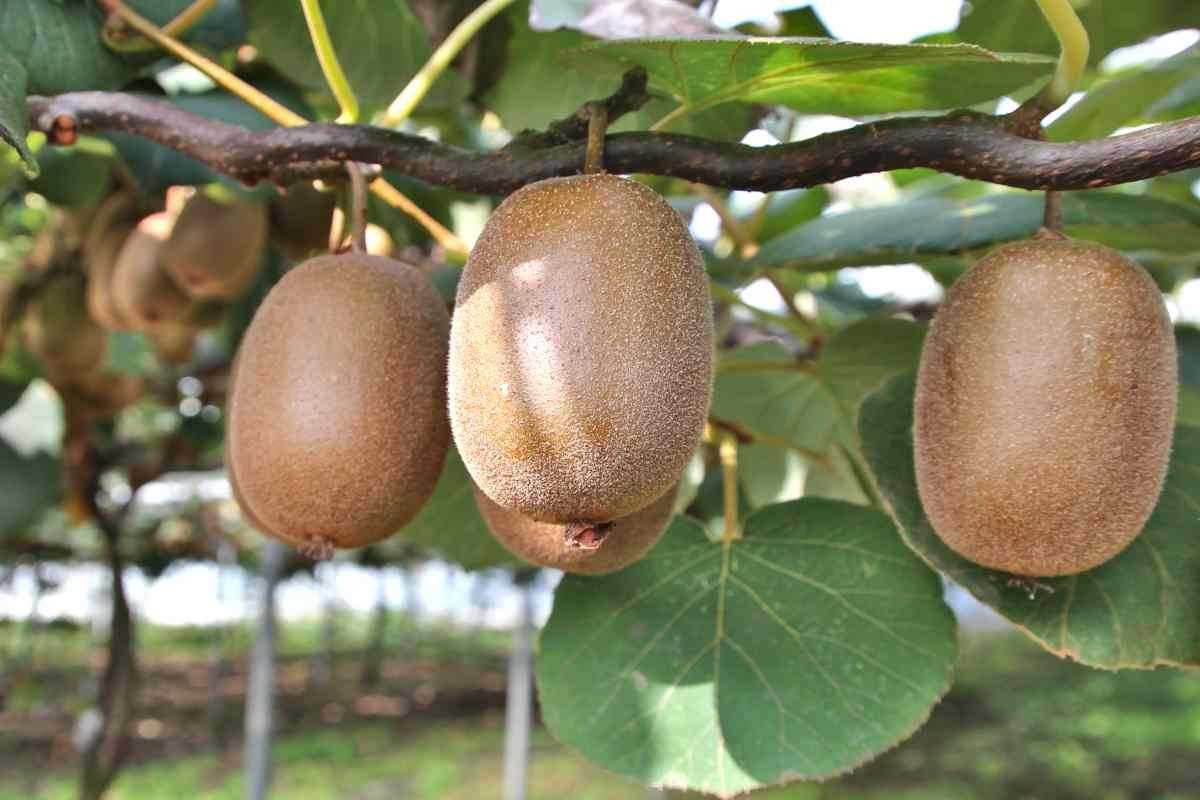
Actinidia plants are susceptible to various diseases, including:
- Powdery mildew: This fungal disease appears as a white powdery coating on leaves and stems. To prevent powdery mildew, ensure proper air circulation around the plants and avoid overhead watering. Remove and destroy infected plant parts.
- Root rot: Root rot is caused by fungal pathogens in poorly drained soil. To prevent root rot, ensure good drainage and avoid overwatering. Plant Actinidia in raised beds if necessary.
- Bacterial canker: This disease causes sunken lesions on stems and can lead to dieback. To prevent bacterial canker, avoid pruning during wet weather and disinfect pruning tools between cuts.
- Leaf spot: Leaf spot is a fungal disease that causes dark spots on leaves. To prevent leaf spot, avoid overhead watering and remove and destroy infected leaves.
Regular Inspections and Maintenance
Regularly inspect Actinidia plants for signs of pests and diseases. Carefully examine the leaves, stems, and fruit for any abnormalities. Promptly address any issues that arise to prevent further damage.
In addition to pest and disease control, maintaining overall plant health is important. Provide adequate water, nutrients, and sunlight to promote strong and vigorous growth. Regularly prune the plants to remove any dead or diseased branches.
By taking proactive measures and addressing any problems promptly, you can protect your Actinidia plants from pests and diseases, ensuring their overall health and productivity in your garden.
Harvesting and Storing Actinidia Fruits
Actinidia, commonly known as kiwifruit, is a delicious and nutritious fruit that can be grown in your garden. To enjoy the fruits of your labor, it is important to know when and how to harvest and store actinidia fruits.
Harvesting Actinidia Fruits
Actinidia fruits are typically ready for harvest in late summer to early fall, depending on the specific variety and local climate. Here are some tips for harvesting actinidia fruits:
- Observe the fruit’s appearance: Actinidia fruits should have reached their full size and be firm but slightly soft to the touch.
- Check the color: Most actinidia varieties change color when they are fully ripe. For example, green kiwifruit varieties turn brown or golden when ripe, while gold kiwifruit varieties become more yellow.
- Look for easy separation: Actinidia fruits should easily detach from the vine when they are ripe. Gently twist the fruit, and if it comes off easily, it is ready for harvest.
- Harvest with care: Use scissors or pruning shears to harvest actinidia fruits, cutting the stem a few centimeters above the fruit to avoid any damage.
Storing Actinidia Fruits
After harvesting actinidia fruits, it is important to store them properly to ensure their freshness and longevity. Here are some tips for storing actinidia fruits:
- Sort and inspect: Discard any fruits that are damaged, overripe, or have signs of mold or rot. Only store healthy and ripe fruits.
- Store in a cool place: Actinidia fruits should be stored in a cool, well-ventilated area away from direct sunlight. A temperature of around 32-40°F (0-4°C) is ideal.
- Avoid moisture: Excess moisture can cause actinidia fruits to rot. Make sure the storage area is dry and has low humidity.
- Separate fruits: Actinidia fruits should not touch each other during storage, as this can accelerate ripening and spoilage. Place them in a single layer or wrap each fruit individually in tissue or newspaper.
- Check regularly: Check the stored actinidia fruits regularly for any signs of spoilage. Remove any fruits that show signs of decay to prevent the spread of rot.
By following these harvesting and storing tips, you can enjoy the delicious taste of your homegrown actinidia fruits for longer.
Popular Actinidia Varieties for Different Climates
Actinidia, commonly known as kiwifruit, is a delicious and nutritious fruit that can be grown in a variety of climates. Here are some popular Actinidia varieties that are well-suited for different climates:
1. Actinidia deliciosa (Hayward)
- Climate: Warm temperate to subtropical
- Characteristics: Large and oval-shaped fruit with brown fuzzy skin and green flesh. It is the most widely cultivated kiwifruit variety.
2. Actinidia chinensis (Golden Kiwifruit)
- Climate: Subtropical to warm temperate
- Characteristics: Medium-sized fruit with hairless, golden-yellow skin and green flesh. It has a sweeter taste compared to Actinidia deliciosa.
3. Actinidia arguta (Hardy Kiwi)
- Climate: Cold temperate to subtropical
- Characteristics: Small, smooth-skinned fruit with green flesh. It is more cold-hardy than other Actinidia varieties and can withstand freezing temperatures.
4. Actinidia kolomikta (Arctic Beauty Kiwi)
- Climate: Cold temperate to cool temperate
- Characteristics: Small, oval-shaped fruit with variegated green and white leaves. The fruit has a sweet-tart flavor and is often used for ornamental purposes in addition to being edible.
These are just a few popular Actinidia varieties, and there are many other cultivars available to suit different climates. When selecting a kiwifruit variety for your garden, make sure to consider the climate conditions in your area to ensure successful growth and fruit production.
Exploring Unique Actinidia Hybrids and Cultivars
1. Actinidia arguta ‘Issai’
The Actinidia arguta ‘Issai’, also known as the kiwiberry, is a unique hybrid that produces small, bite-sized fruits. This cultivar is self-fertile, meaning you only need one plant to produce fruit. The ‘Issai’ variety is known for its sweet and tangy flavor, making it a popular choice for snacking or adding to desserts.
2. Actinidia arguta ‘Geneva’
The Actinidia arguta ‘Geneva’ is another popular kiwiberry cultivar. It is known for its large, sweet, and flavorful fruits. This variety is also self-fertile and produces an abundant harvest. The ‘Geneva’ kiwiberry is perfect for eating fresh or using in recipes.
3. Actinidia chinensis ‘Hayward’
The Actinidia chinensis ‘Hayward’ is the most well-known and widely grown kiwifruit cultivar. It produces large, fuzzy fruits with a sweet and tart flavor. This variety is not self-fertile, so you will need both male and female plants for pollination. ‘Hayward’ kiwifruits are great for eating fresh, juicing, or using in various culinary preparations.
4. Actinidia kolomikta
The Actinidia kolomikta, also called the variegated kiwi, is a unique hybrid that features foliage with stunning coloration. The leaves have patches of pink, white, and green, creating a visually striking appearance. While this variety produces small, less flavorful fruits compared to other kiwi cultivars, it is often grown for its ornamental value in gardens.
5. Actinidia deliciosa ‘Jenny’
The Actinidia deliciosa ‘Jenny’ is a hardy kiwifruit cultivar that is perfect for colder climates. It is self-fertile and produces medium-sized, sweet fruits with a smooth texture. ‘Jenny’ kiwifruits can be enjoyed fresh or used in various culinary applications.
6. Actinidia polygama
The Actinidia polygama, also known as the silver vine or matatabi, is a unique kiwi cultivar that is primarily grown for its ornamental and medicinal properties. It is a climbing vine with attractive silver-green foliage and small, fragrant flowers. The leaves and stems of Actinidia polygama have been used in traditional medicine for their calming and sedative effects.
7. Actinidia purpurea
The Actinidia purpurea, also called the purple kiwi, is a rare and unique cultivar that produces purple-skinned fruits. The flesh inside is green with a sweet and tangy flavor. This variety is often grown for its decorative appeal and the novelty of its purple fruits.
Summary
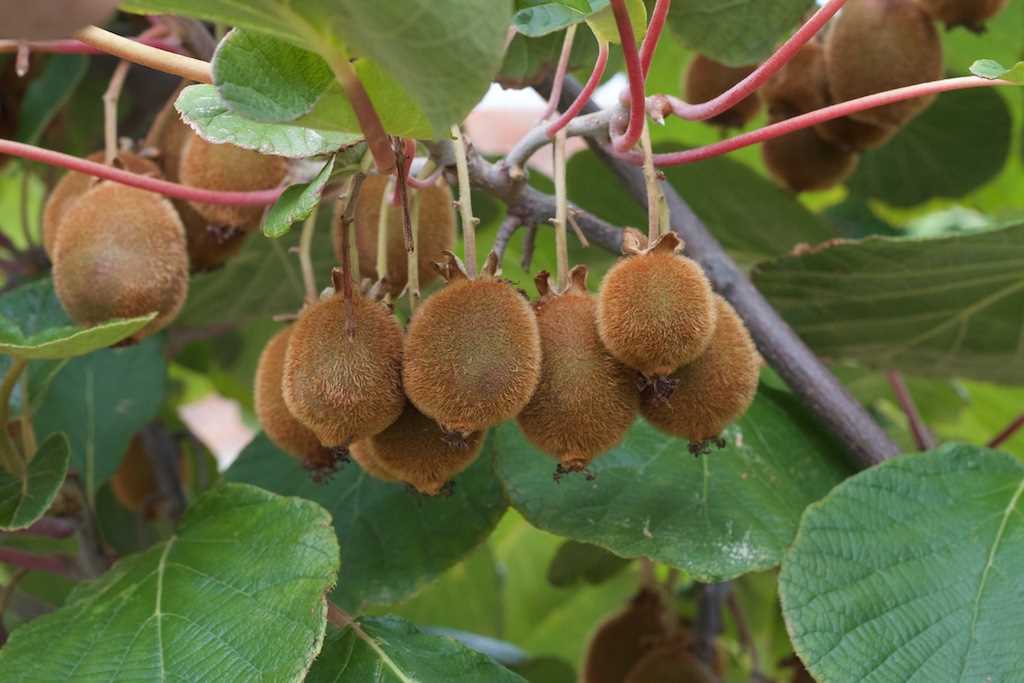
There are many unique and interesting Actinidia hybrids and cultivars available to explore. From the small and sweet kiwiberries to the variegated foliage of the kolomikta and the medicinal properties of the silver vine, there is a wide range of options to choose from when growing Actinidia in your garden. Whether you’re looking for a fruit to enjoy fresh, a plant for ornamental purposes, or a natural remedy, Actinidia has something to offer.
Question-answer:
What is Actinidia?
Actinidia is a genus of plants that are commonly known as kiwifruit. They are native to East Asia and are now grown in many parts of the world for their delicious fruit.
What are the different types of Actinidia?
There are several types of Actinidia, including Actinidia deliciosa (commonly known as the kiwifruit), Actinidia arguta (also known as the hardy kiwi), Actinidia kolomikta (known as the variegated kiwi), and Actinidia polygama (known as the silver vine).
What are some tips for growing Actinidia in the garden?
When growing Actinidia in the garden, it is important to choose a sunny location with well-draining soil. The plants also need support, as they are climbers. Regular pruning and watering are essential for proper growth and fruit production. It is also important to provide protection from strong winds and frost.
Can Actinidia be grown in containers?
Yes, Actinidia can be grown in containers. Choose a large container with good drainage and fill it with a well-draining potting mix. Place the container in a sunny location and provide support for the plants to climb on. Regular watering and feeding are important for container-grown Actinidia.
How long does it take for Actinidia to bear fruit?
The time it takes for Actinidia to bear fruit can vary depending on the type and variety. In general, it takes 3-5 years for the plants to reach maturity and start producing fruit. Some varieties may start fruiting earlier, while others may take longer.







